G. L. Pease
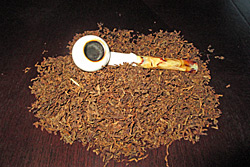 The tobacco of Semois—the seed, the soil, the climate, what in the wine world is referred to as terroir, along with ages-old traditional methods of growing, harvesting and curing—there is simply nothing like it produced anywhere else in the world. It’s one of those rare and unique things, like the cigars of Tuscany, that has no peer. If you want to taste Semois, you must taste Semois; nothing else comes close. Yet, only a few outside of Belgium know much, if anything about this rare gem, because there are now only three growers/producers, and local demand consumes much of the available supply; it’s all but unavailable outside of its home turf.
The tobacco of Semois—the seed, the soil, the climate, what in the wine world is referred to as terroir, along with ages-old traditional methods of growing, harvesting and curing—there is simply nothing like it produced anywhere else in the world. It’s one of those rare and unique things, like the cigars of Tuscany, that has no peer. If you want to taste Semois, you must taste Semois; nothing else comes close. Yet, only a few outside of Belgium know much, if anything about this rare gem, because there are now only three growers/producers, and local demand consumes much of the available supply; it’s all but unavailable outside of its home turf.
 Semois presents a gentle, lightly floral, herbal scent, riding on the stronger, more earthy notes of pure tobacco. These aromas derive not from additives or flavorings, but from the land itself, and from the traditional toasting methods employed in its production. The result is a strong, smoothly rustic tobacco with a flavor that is somewhat reminiscent of Kentucky’s dark-fired leaf, yet completely different. It does not pretend at finesse or sophistication, but has an honesty about it, an authenticity that is increasingly rare in a world where such things are too often swallowed up by modernity, thrust into the contrivances and machinery of mass-production, and spit out the other end devoid of their soul. Semois remains genuine, the real thing, thriving only in its own little bubble, ignoring of the rest of the world and the passage of time.
Semois presents a gentle, lightly floral, herbal scent, riding on the stronger, more earthy notes of pure tobacco. These aromas derive not from additives or flavorings, but from the land itself, and from the traditional toasting methods employed in its production. The result is a strong, smoothly rustic tobacco with a flavor that is somewhat reminiscent of Kentucky’s dark-fired leaf, yet completely different. It does not pretend at finesse or sophistication, but has an honesty about it, an authenticity that is increasingly rare in a world where such things are too often swallowed up by modernity, thrust into the contrivances and machinery of mass-production, and spit out the other end devoid of their soul. Semois remains genuine, the real thing, thriving only in its own little bubble, ignoring of the rest of the world and the passage of time.
What appeals to me even more than the tobacco itself, though, is the story of it, and nowhere has this story been told as beautifully as in Wil S. Hylton’s engaging account of his own journey to Semois, specifically to the home of Vincent Manil, one of the three remaining producers in the valley. Tobacco That’s So Brooklyn but Made in Belgium has just been published in The New York Times Magazine. I had the pleasure of spending a few hours with Wil before he left on his trip, and have been anxiously awaiting this. It was worth the wait.
-glp
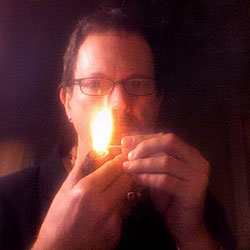 Since 1999, Gregory L. Pease has been the principal alchemist behind the blends of G.L. Pease Artisanal Tobaccos. He’s been a passionate pipeman since his university days, having cut his pipe teeth at the now extinct Drucquer & Sons Tobacconist in Berkeley, California. Greg is also author of The Briar & Leaf Chronicles, a photographer, recovering computer scientist, sometimes chef, and creator of The Epicure’s Asylum. See our interview with G. L. Pease here. |









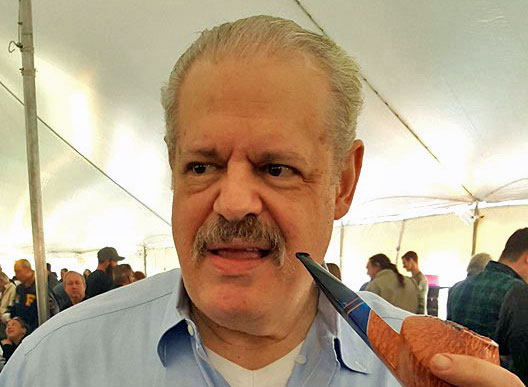

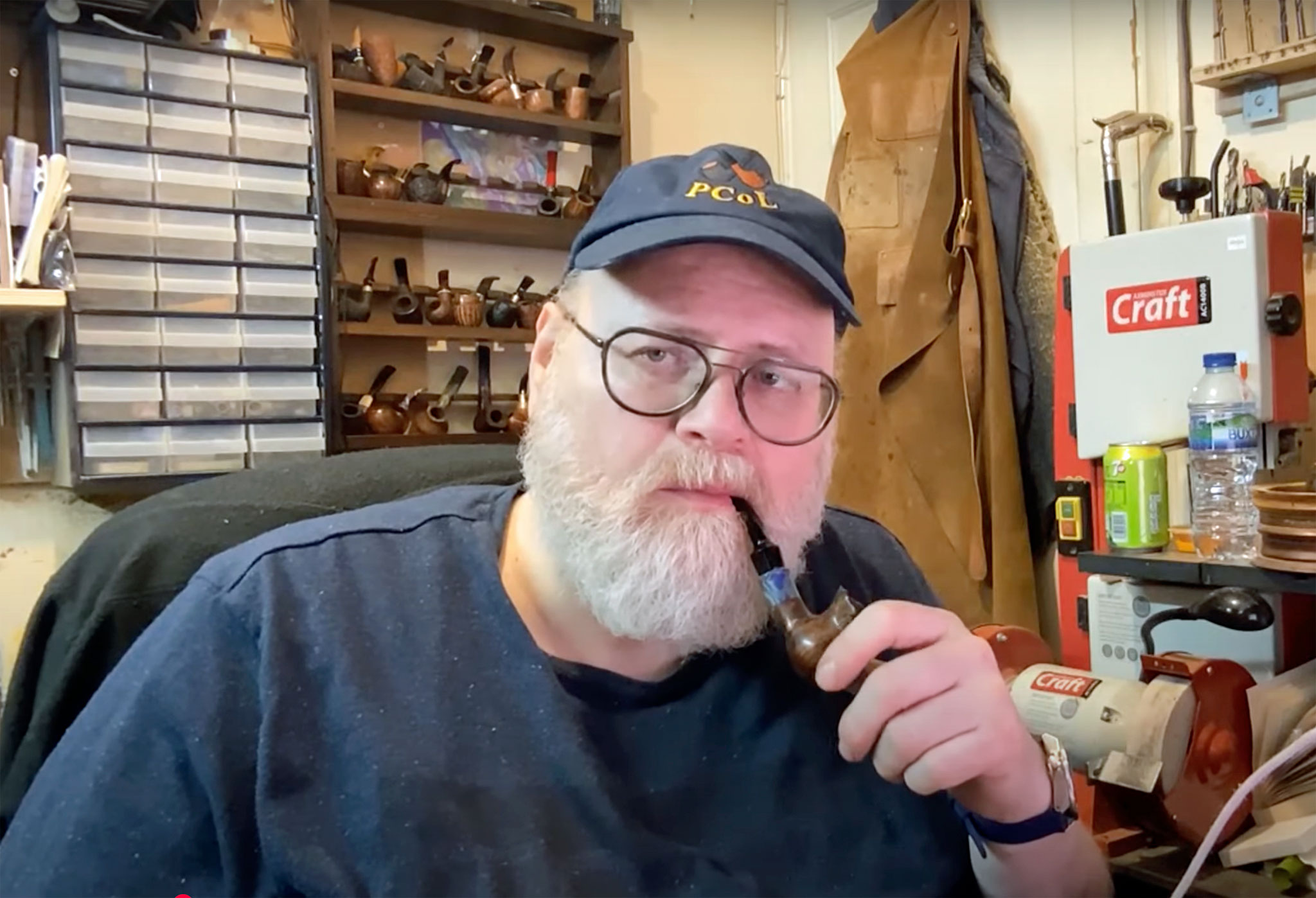
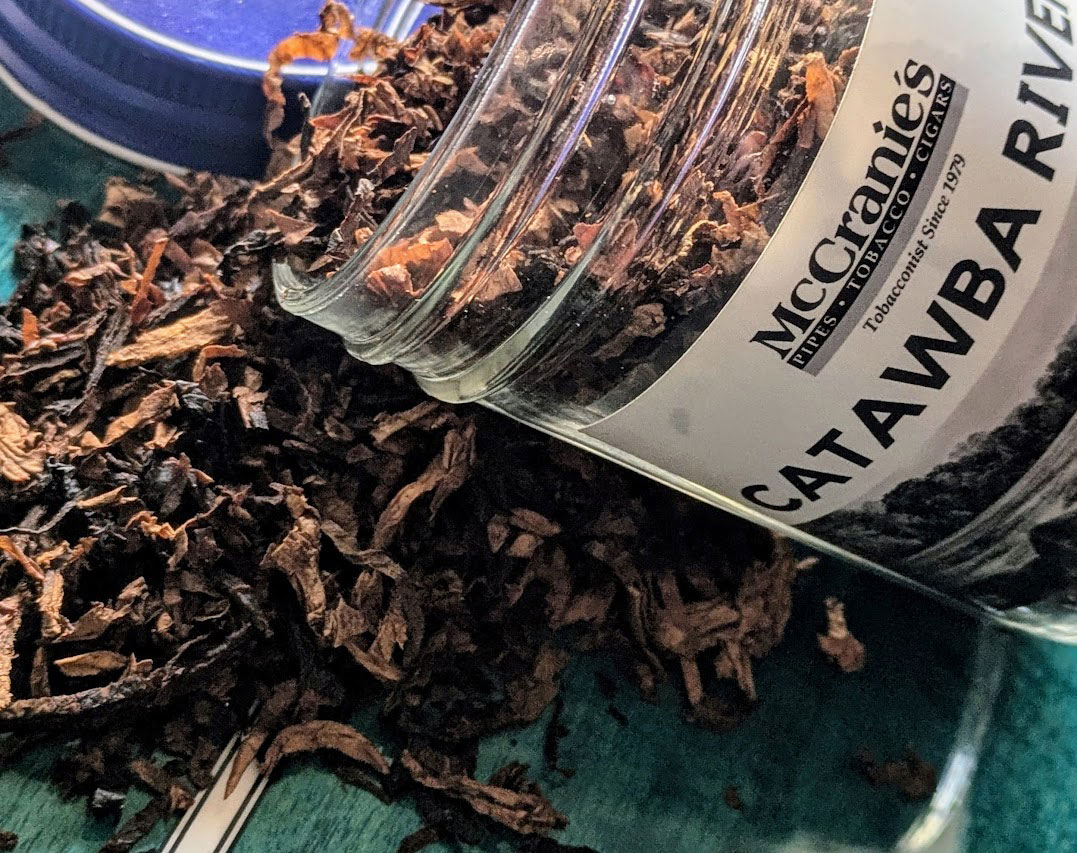




Just to be sure I understand this, Greg, you just did a review of a tobacco that I have not even a snowball’s chance in hell of ever tasting. Hmmmmm.
You can certainly taste it. Just book your flight, and have a wonderful holiday in Belgium!
.
More than reviewing the tobacco, I wanted to point to Wil’s beautifully written story, which is about the tobacco, yes, but so much more. A pro-tobacco piece of any sort being published in a national press is pretty special, and deserves our attention.
-glp
+1 GLP
If I wasn’t jealous of you before… consider this a public affirmation of jealousy. This stuff sounds amazing, and I hope they are able to thrive so that one day I may have a shot to taste this stuff.
The piece was epic. I’ll have to look at his book and past works. A great story teller indeed!
Comment on the article too! Let the world know we exist and we’re super nice!
I must admit to a certain fascination with different tobacco types, and the tobaccos that are no longer available. It is certainly reasonable to assume that there are also tobaccos out there that are only available regionally. Some day, perhaps, I may get to sample some in my travels.
Thanks!
Thanks Mr. Pease for pointing us on this wonderful article in the NYT Magazine. That was most interesting.
Great article and I loved Wil Hylton’s story, which took me back to Belgium with my Dad when, in the early 1980’s, we revisited the places he’d been (including the Battle of the Bulge) during World War II.
Wil’s story is well done and almost as interesting as Semois leaf itself. What I found most intriguing is that of the 11 comments to the NYT article, so far nine of them are positive.
Way to Go GL!
Please let me say, “You Rock” on so many levels! Today it is Semois Tobacco … we are all now wanting some and we have you to thank again!!
I am always on the lookout for interesting things to learn about; the world of tobacco is always full of new things to ponder and research. Your well crafted, short introduction to the “New/Old” World of Semois Tobacco is yet another leaf of this Grand Plant we call Tobacco! (Discovering new things is grand; Thank You!)
To help kcghost and other friends, please let me say that the internet is such a marvelous tool to help us on our journey following the great smoke trail. A simple Google search “Semois Pipe Tobacco For Sale” will yield great opportunities with out buying an airplane ticket. (So will the Google translator button on the top right corner of the page, as will the Dictionary.com Translator if you decide to sent an email over to that side of the world)
Happy Smoke Trails to the adventurous ones among us!
FP Stew
Absolutely wonderful article! Thanks for the link! And I thought I made the “ultimate” Semois article in my blog http://dutchpipesmoker.wordpress.com/2013/03/19/sunny-semois/
http://dutchpipesmoker.wordpress.com/2013/03/19/sunny-semois/
Great article. Who knows? Might it lead to a pipe renaissance? I hope so. Speaking of Semois, here’s a link to The Dutch Pipesmoker run by Arno, in which he has an excellent article on this refined country tobacco.
http://dutchpipesmoker.wordpress.com/2013/03/19/sunny-semois/
[IMG]http://i1100.photobucket.com/albums/g406/eboehmjr/Pipe%20Adverts/2769777d.jpg[/IMG]
Great article!
A breath of fresh air for that paper. It’s the one edition that has been saved from the bottom of my bird cage.
That is an excellent article you posted on your blog arno665. One thing though – you say it is flue cured, but I am told this is incorrect. After harvest, it is air-cured (like all burley) and then it is toasted over burning coals, which is different than flue-curing. They both add heat, but in quite different ways. Great write-up though. I have my tobacco review coming shortly.
Thanks for the heads up! It indeed is some kind of toasting, heat-curing. I changed the post on my blog.
Will wonders never cease?!
A PRO-tobacco article in the NYT Magazine! (A pipe smoking primer included!) This must be as rare as the subject Belgian leaf…. and may I say, even more commendable!
+1 GLP and Spartan.
I have never seen, smelled, or heard of Semois, but I can say after reading it I NEED to sample it.
Reading the NYT article took me back to a different time, and I thank you for sharing.
Great Article! Beautiful place.
Arno, in your article you mention Didolux and Flandria. True, these tobaccos are presented as semois. In reality they contain no semois whatsoever. This is made possible by the fact that the appellation “semois” was never protected by law, so anyone can call his tobacco “semois”. Only Manil, Couvert and Martin produce and sell the real stuff. And even their semois tobaccos, even those that are advertised as 100% semois or pure semois, contain a certain percentage of other tobaccos.
The article in NYT is a great article, and it is great writing. Being French and pipe smoker (something very rare in my country now), it is great to read about Semois from a famous American blender. However, I don’t agree with only one of your sentence, and all the Semois smokers I know would neither, and they would even ben offended by it : “It does not pretend at finesse or sophistication”.
You may have been misled by the typical smell of “terroir”, this mixture of leaves, undergrowth, mushrooms, earth after rain. Maybe you do not have a complete and thorough experience of Semois or, more likely, this sentence was written too fast. Despite its rustic appearance, the tobacco Semois is one of the more complex and less monolithic tobacco that exists: it is like a great wine. Its evolution is constant during smoking. Tastes of fruits, woods, licorice, toast, brioche, caramel can appear.
I will not pretend to be a great expert of Semois, but when I discovered it, it was not so long ago, it was a revelation. And I had the chance of being advised by pipe smokers far more experienced than me. As many here seem to be interested by the Semois, I would like to draw your attention to a few points.
1)The article focuses on Manil Vincent and La Brumeuse. Vincent Manil is one of the three producers of Semois. The two others deserve to be named : they are Jean-Paul Couvert and Joseph Martin. They are no better or worse: they are all different, and connoisseurs appreciate the characteristics and huge qualities of each.
2) Beware : the Semois is not an AOC. Any tobacco may take the name of Semois – and a lot do. So be careful: if these tobaccos are not signed by one of these three producers, this is not Semois.
3) I would also not advise to discover the Semois with “La Brumeuse”: this is one of the strongest. “La Réserve du Patron” from Vincent Manil, “Lux No. 3” from Joseph Martin or “Cordemoy” from Jean-Paul Covert are more indicated for beginners, and all of them are highly-acclaimed tobaccos. The “Cordemoy” is a delicious, fruity – and the end of the bowl, with flavors of brioche, is a pure delight. You cannot go wrong with that one. Of course this is all without additives.
4) It is important not to keep Semois with humidifier : being 100% natural, molds can arrive quickly. You should know that the Semois must be smoked dry. As it is smoked dry, it burns much faster than usual mixtures. It also heats much, but the risk of burning a pipe is minimal because the embers down quickly.
5) The Semois is the perfect tobacco to break in a pipe, whatever the tobacco you will choose for your pipe after this. Semois prepares remarkably new pipes and authorizes any tobacco after.
All of this, I did not invent : these are tips that are given by other and more experienced pipe smokers, and believe me, I do not regret to follow them. I hope this will be the same for you.
.
[Thank you for a wonderful and informative comment. Of course, it has now stimulated a desire to sample the rest of what the valley has to offer. There are worse problems to have. Now, to find a supplier. -glp]
I have to say that I prefer the story to the tobacco!
Salabreuil – Thanks for your informative comments. I have a pouch of the Windels Semois that a friend gave me. I guess this is not the real Semois? I did find many of the same flavors you spoke of though: “earth after rain, woods, toast, brioche, caramel – I detected all of those as well as floral and herbal characteristics.
Nope, Windels semois is made by Flandria and contains no real semois leaf.
I am VERY surprised to read all of this! I knew Windels Semois was of lesser quality than the Manil Semois, but I am amazed that it doesn’t contain Semois at all! I shall ask my fellow Belgium forum members about this. If it is true I will change the post on my blog. Anyway, thanks for the info!
Salabreuil, can I use your comment in my blog? Highly informative!
@arno665 : of course, you can ! And no : Windels doesn’t contain true Semois from the valley.
@glp : yes, there are worse problem ! And, of course, it’s always exciting to have something to desire. Anyway, you can join me in MP if you want.
Oh, last tips : Semois should be smoked veeeery slowly – but isn’t it true for every tobacco ?
You can also try some mix with Semois – specially the Brumeuse which is quite strong. A friend advised me to try adding a few pinches of Latakia : great result…
I just read the article online. It is one of the best articles on pipe smoking and tobacco that I have ever read, in over 50 years of pipe smoking.
It seems to me the curing over smoke can be compared somewhat to the curing of Latakia.
This tobacco has probably instantly become the most desired tobacco among pipe smokers to try.
And you thought Penzance was hard to get?
@Kevin : No, Windels is not true Semois. I never smoked it. From what I read, it used to be a good tobacco, but they change the recipe, and it is not as good as it was before, and it is far from a true Semois – I think it is more Wervicg than Semois. On the other hand, Didolux, from Dido, which speak about Arno and Rhodog, even if it is not from Couvert, Manil or Martin, could be an exception : Semois lovers considerer it as a great tobacco and as a Semois. I’ll find out.
I read Hylton’s excellent article over the weekend, as well as Arno’s enjoyable blog. With such nostalgic encouragement, I could not help but fill a pipe with Semois from Couvert and be taken in completely. Those who can smoke slowly will be rewarded with a warm, subtly heady and enveloping experience. Hard puffers need not apply as the taste will give way to little more than body without spirit.
I have family that speaks and writes French. I will have to splurge and order more Semois when my precious stock is depleted. Language might not be a barrier to obtaining more Semois, but the cost of shipping from Belgium…
Check out my review here:
https://pipesmagazine.com/blog/pipe-tobacco-reviews/windels-grove-semois-coupe-grosse-tobacco-review/
Fellow lovers of the briar:
Just LOVED the article about Semois. As luck has it, I currently have some family in Belgium, who will be returning to the US this summer, and I have asked them to get some for me, to bring back. I’ll see what happens…..
Great article,
My daughter was in Belgium recently, and brought me two pouch of Semois (one Windels and other Flandria) both ‘Vieux’, are a very strong tobacco, but very tasty to smoke
attention: smokes the Semois after a big meal !